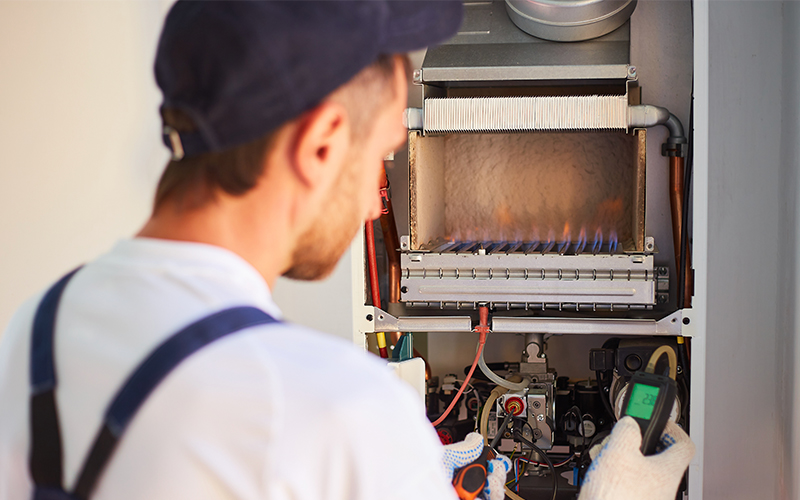Known as the silent killer, carbon monoxide is odorless and invisible but highly deadly. More than 20,000 people are treated for carbon monoxide poisoning, and 430 people die from it every year, according to the Centers for Disease Control and Prevention.
Those are tragic statistics, especially considering that carbon monoxide poisoning is entirely preventable through routine furnace maintenance and use of a CO2 detector.
If you haven’t scheduled your bi-annual furnace inspection, call HVAC 911. You will be connected to a local HVAC contractor who can help. It just might save the lives of your family.
How an HVAC inspection can prevent deadly CO2 leaks
During a routine maintenance check, an HVAC specialist like the contractors of HVAC 911 will inspect the safety mechanisms that prevent carbon monoxide from poisoning your home. They’ll investigate the heat exchanger for cracks. They’ll check the flue to ensure it’s venting properly.
In addition to a carbon monoxide inspection, they will change any filters and clean spots where dirt and grime have accumulated. They’ll examine all parts to see if any need replacing. This ensures your furnace operates at peak efficiency, lowers your heating bill and prevents the furnace from breaking down in the middle of a cold snap.
The importance of installing a carbon monoxide detector
In addition to having your furnace inspected regularly, you should also install a carbon monoxide detector in your home to identify deadly leaks. You should install one on every floor, in every bedroom and within 15 feet of any gas appliance, including the furnace. If the detector is battery-operated, replace the batteries once per year. Hard-wired carbon monoxide detectors can be installed by an electrician. Other models plug into any electric socket. Be sure to test your carbon monoxide detector on an annual basis.
Other sources of carbon monoxide leaks
In addition to your furnace, carbon monoxide can leak from any household appliance that uses oil, gas or propane. It’s essential to have an HVAC tech inspect these items and have a CO2 detector installed in case something goes wrong.
Symptoms of carbon monoxide gas poisoning
Signs of carbon monoxide are usually first detected in pets, children and the elderly. Symptoms include:
- Dizziness or weakness
- Dull headache
- Indigestion
- Flu-like symptoms
- Nausea
- Vomiting
- Confusion
- Blurred vision
- Loss of consciousness
Most of these symptoms are similar to the flu. But if multiple people in your family are exhibiting these symptoms and they only happen when you are in the home, evacuate the house and call 911.
Need a furnace inspection? Call HVAC 911
If you haven’t had your furnace inspected this year, call HVAC 911. You will be connected to a local HVAC specialist who can inspect your furnace for potential carbon monoxide leaks. They will also inspect the system for any damaged or failing parts, clean the components and change the filters. An HVAC inspection will not only keep your family safe, but help you save money through a more energy-efficient furnace.
